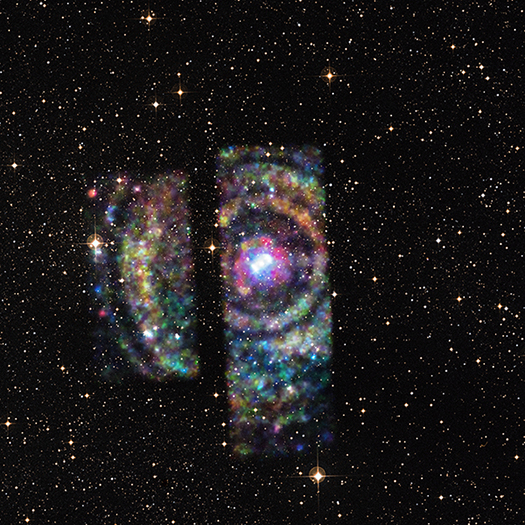X-ray Echoes Pinpoint Location of Distant Flaring Neutron Star

Data from NASA's Chandra X-ray Observatory has helped provide a rare opportunity to determine the distance to an object on the other side of the Milky Way galaxy, as described in our latest press release
The object is Circinus X-1, containing a neutron star - the collapsed core left behind after a star exploded - in orbit with a massive star. The Chandra data reveal a set of four rings that appear as circles around Circinus X-1. These rings can be seen in the composite image where X-rays from Chandra are red, green, and blue corresponding to low, medium, and high-energy X-rays respectively, which have been combined with a view in visible light from the Digitized Sky Survey. The sharp edges are caused by the large size of the X-ray rings compared to the relatively small field-of-view of the Chandra detectors, providing only partial coverage.
What are these rings and what information do they provide? These rings are light echoes, similar to sound echoes that we may experience here on Earth. Instead of sound waves bouncing off a canyon wall, the echoes around Circinus X-1 are produced when a burst of X-rays from the star system ricochet off of clouds of dust between Circinus X-1 and Earth.
More information at http://chandra.harvard.edu/photo/2015/cirx1/index.html
-Megan Watzke, CXC
Please note this is a moderated blog. No pornography, spam, profanity or discriminatory remarks are allowed. No personal attacks are allowed. Users should stay on topic to keep it relevant for the readers.
Read the privacy statement
